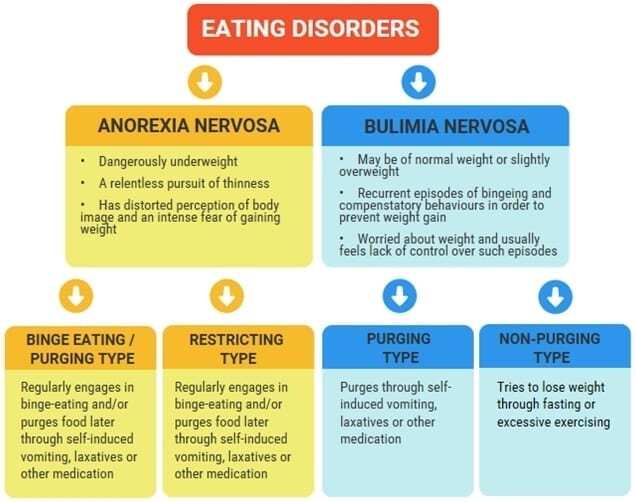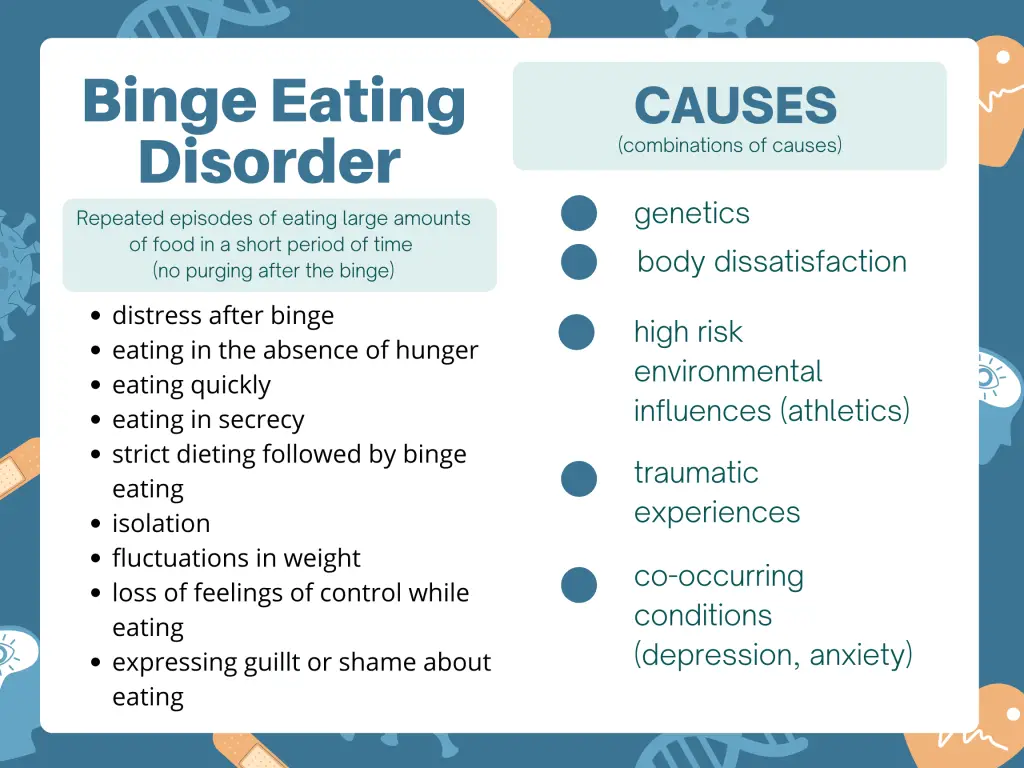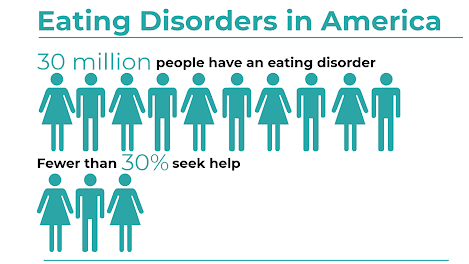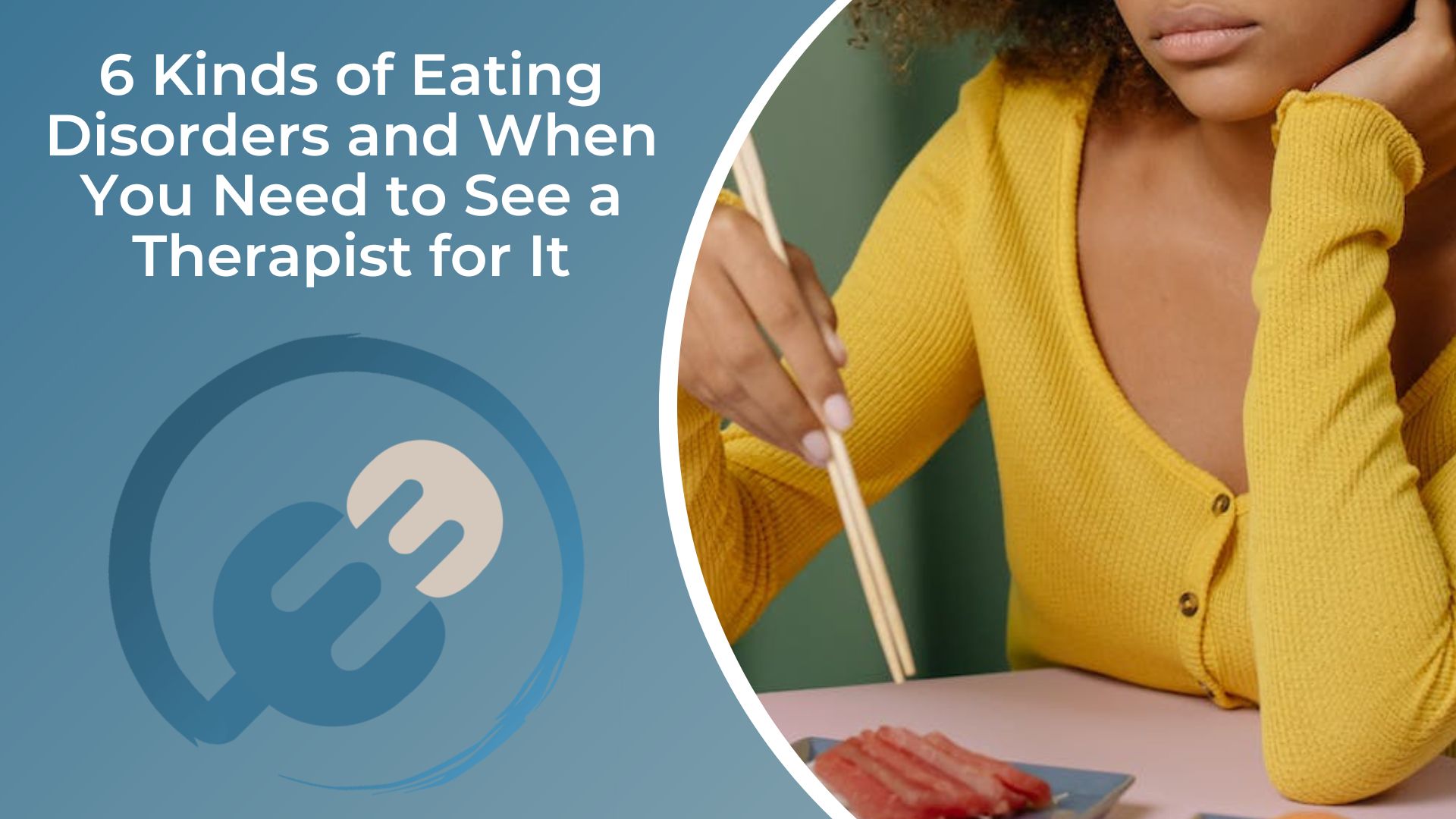Eating disorders can be devastating, but they’re also highly treatable. The sooner you get help, the better your chances are at getting better and staying that way.
Unfortunately, many well-intentioned therapists, coaches, counselors and more give “good” advice that falls short and is a bit superficial.
Here’s a video about “good” advice if you have an eating disorder, and how to really go deeper so that you heal the core underlying causes of your eating disorder, such as trauma or “exiles”.
But how do you know if you or someone you love has an eating disorder? Here are the most common types of eating disorders.

Anorexia Nervosa
Anorexia nervosa is an eating disorder characterized by self-starvation and excessive weight loss. The person may be obsessed with the idea of being fat or fear gaining weight. Anorexia nervosa is not just about food but a complex mental illness that involves an extreme desire to lose weight and keep it off.
It’s important to seek help from a therapist if you think you might have anorexia nervosa, as this condition or another eating disorder can be life-threatening if left untreated.
Bulimia Nervosa
Bulimia is characterized by eating large amounts of food, then getting rid of it, usually through vomiting or using laxatives. The behavior usually occurs in secret and may go on for months or even years.
Bulimia often goes hand in hand with other conditions like depression, anxiety, and substance abuse, all things that can make someone feel worse about themselves.
Bulimia can also lead to serious health problems if it continues unchecked. Electrolyte imbalance (low potassium), dental problems (from frequent vomiting), increased risk for stomach ulcers, and irregular heartbeat are just some of the potential consequences associated with bulimia.
Binge Eating Disorder

Binge eating disorder is a serious mental illness. It can cause psychological and physical problems, including depression, anxiety, and guilt. Individuals who have binge eating disorders often struggle to control their eating habits and continue to experience shame or embarrassment about their behavior.
While it’s not uncommon for people with binge eating disorders to be overweight or obese, the condition doesn’t just affect people who eat large amounts of food at one time. The symptoms of binge eating disorder include:
- Eating a lot of food in a short period
- Feeling out of control while you’re eating
- Experiencing shame or embarrassment after your binges
Avoidant/Restrictive Food Intake Disorder (ARFID)
ARFID is an eating disorder that causes someone to have an aversion to foods that are considered safe to eat, such as fruits and vegetables.
The aversion can be physical, psychological, or both. When it’s physical, a person may experience gastrointestinal distress after eating certain foods or feel like her throat closes up on her when she tries to swallow them. The person might also get nauseous from the smell of certain foods.
Or if there’s some sort of psychological element involved, perhaps the thought of eating something healthy makes him feel guilty, or vice versa with unhealthy foods like junk food or fast food, even though they know it would be good for them not to eat unhealthy all the time.
According to Live Science, ARFID is most frequently seen in infants and children, but in some cases, it persists in adults too. An estimated 3.2% of the general population is estimated to be affected by it.
Pica
Pica is an eating disorder in which you compulsively eat non-food items. Common examples of pica include eating dirt, ice, paint chips, and paper. While it may seem like a harmless habit at first glance, it can lead to health problems if left untreated.
For example, untreated pica can lead to anemia, electrolyte imbalances, and more serious conditions like kidney damage or even death. Pica has led some people with these disorders to ingest dangerous objects like batteries or coins that can cause serious harm if they get stuck inside the body.
As reported by Express, a polish woman with pica disorder recently attempted to eat a 3-foot-long iPhone charger cable.
Rumination Disorder
Rumination is the act of regurgitating food, usually after you have already swallowed it. If you have a rumination disorder, this behavior is excessive and occurs at least twice a week for around three months. It can be accompanied by symptoms like nausea and vomiting after eating.
The main symptom of rumination disorder is the repetitive regurgitation or re-chewing of food without being able to stop yourself from doing so. This may occur immediately after swallowing or hours later, depending on your situation.
The act feels involuntary but can also be triggered by certain emotions. For example, anxiety about an upcoming event or feeling upset about something that’s happened recently, like losing your job.
If you have rumination disorder, you may feel like your thoughts are stuck in a loop, and you can’t stop them. You might also feel depressed or anxious because of this or worried that no one will understand what’s happening to you. If this sounds like something that has happened to you before, talk to your doctor about getting help for it.
A Therapist Can Help You Work through These Issues
When you have an eating disorder, it can be difficult to identify the issues that are causing your behaviors. In therapy, a therapist will help you work through these feelings and identify the deeper issues that may be affecting your relationship with food. To consult a therapist, you must first find a good one. You can do that by asking for a reference, or the best way is to search “find a therapist near me” on google.
Your therapist can also help you develop healthy eating habits and a healthy relationship with food by teaching you skills such as how to recognize hunger cues and how to make healthier meal choices when you’re hungry.
Conclusion

There is no shame in seeking professional help for any type of eating disorder, but it’s important to not wait too long.
According to KUER, 20 million women and 10 million men in the U.S. will experience an eating disorder at some point in their life. These disorders can lead to serious health problems, such as heart failure and liver damage. The sooner you seek treatment, the better your chances for recovery will be.
Most eating disorder clinics, coaches, counselors, and therapists offer a Free Consultation on their website if you look for it.
I highly suggest you find an approach and person who you really resonate with as this journey is tough!




